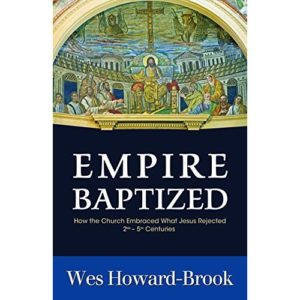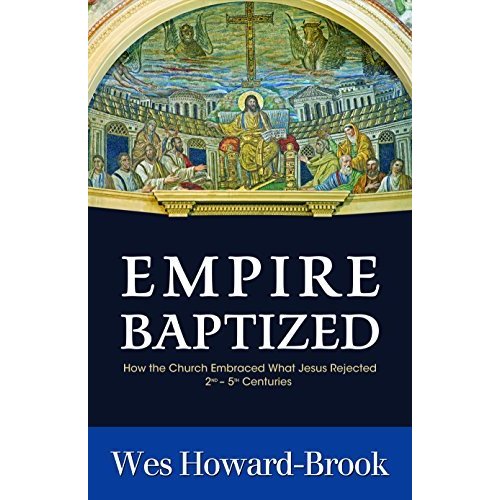
Book Review–Empire Baptized
Many people, who are followers of Jesus and who are active in the fellowship of believers called The Christian Church, catch ourselves wondering why there is often such a disconnect between the teachings of Jesus Christ and the everyday life of the Church. Why, for example, has a fellowship that began as an example of egalitarian unity become so hierarchical? Why, in a church that was based on the power of love, are the worldly powers of strength and intimidation used frequently. Many of the Church’s doctrines and theological beliefs, upon examination, appear to be at odds with the teachings of Jesus contained in the gospels. What happened?
The book, Empire Baptized: How the Church Embraced What Jesus Rejected, Wes Howard-Brook, Orbis Books, Maryknoll, New York, 2016, offers an explanation. The book explores the historical context of the Church and the leaders of the Church in the second through the fifth centuries. The author clearly reveals the forces at work, both outside and inside the church, during this formative period of its life. Over and over again it is demonstrated, by the author, how the Church opted for the use of worldly powers while rejecting the teachings of Jesus. As the historical foundations for the doctrines of the Church are laid bare, there is a clarion call to return to the teachings of Jesus.
This is a substantial book. It is an important book on which the followers of Jesus should reflect. I learned more from Howard-Brook about the church fathers and the identified heretics and enemies of the Church than I did in all of my seminary classes. The book also enabled me to see the history of the Church from a different perspective. Howard-Brook crams his book with information and, as a result, the book is heavily footnoted. This is the books strength and also its Achilles heel.
The book reads like a text book, or what I imagine a legal brief would be like. It is so full of facts that it at times overwhelms the reader. Howard-Brook also goes into such great detail that it is difficult to keep the readers’ attention. Thus the book is not for someone who is looking for a casual read or concise explanation of the current state of affairs. This book takes work–but I think it is worth the effort.
So, be warned. If you want to wrestle with a book that will give you a clearer understanding of history and a fresh perspective on the Church, then this is the book for you. If you want an informative, easy read, you’ll need to wait for the “Readers Digest” version to be published.

